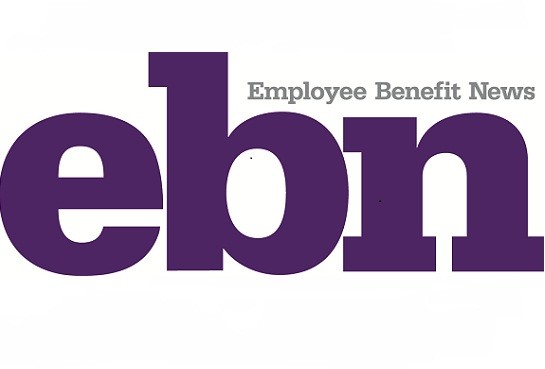By Spencer Williams | August 30, 2017
Without seamless plan-to-plan portability in place to preserve retirement savings when a participant changes jobs, many employers are unwittingly paying “exit bonuses” to terminated employees that they may never have intended to pay.
How the ‘Exit Bonus’ Works
Employer-matching contributions refer to a matching dollar amount contributed by an employer to the retirement savings of an employee who also makes a similar contribution, usually to a 401(k) plan. Typically, these matching contributions are viewed by employees as a tangible, high-value benefit, and by employers as a means to attract and retain the best talent, and improve plan participation and deferral percentage metrics.
The Plan Sponsor Council of America (PSCA) reported in its 59th Annual Survey of Profit Sharing and 401(k) Plans that a total of 38.9% of plans vest these matching contributions immediately, and another 5% vest within two years. The remaining 56.1% vest over a three-to-six-year period.
Unfortunately, employers’ generosity is not always rewarded. With average job tenure ranging from two to four years for the participants in the 43.9% of plans that vest within two years, the result is that cash-outs cause large amounts of employer-matching dollars to go up in smoke, transforming these vested benefits from retirement savings into consumption expenditures, after taxes and penalties are deducted from the payout.
Based on our estimate that $68 billion will be cashed out of the U.S. retirement system by year-end (see the National Retirement Savings Cash Out Clock), approximately $6.2 billion of these cash-outs represent employer-matching contributions. Of this amount, we further estimate that $3.9 billion will be cashed out needlessly, for reasons that have nothing to do with a financial emergency. That’s a substantial “exit bonus” for job-changing employees.
Expanded Access Will Make the Exit Bonus Worse
According to recently published research, more Americans participate in an employer-sponsored retirement plan than previously thought.
- The Investment Company Institute’s (ICI) new findings show that about 63% of American workers between ages 26 and 64 in 2013 participated in a defined benefit or defined contribution plan directly or through a spouse. This is 5% higher than the plan participation rate reported in the Annual Social and Economic Supplement to the Bureau of Labor Statistics’ Current Population Survey from 2008 to 2013. The ICI believes that the Current Population Survey underreported plan participation during this period. The ICI also claims that the 10% drop in plan participation from 2013 to 2015, which was the result of a change in the survey questionnaire, is not corroborated by data from any other source.
- The Employee Benefit Research Institute (EBRI) revealed in early August that 41.3% of the plan participants in the EBRI/ICI 401(k) database at year-end 2015 had less than $10,000 in their 401(k) savings accounts. That’s the highest percentage of participants with less-than-$10,000 balances since year-end 2008, during the financial crisis.
So what do these two findings tell us? They reveal that auto enrollment has been an extremely successful tool for bringing younger and lower-income workers into the 401(k) plan system. Importantly, there are now public policy initiatives under consideration (e.g. Universal Multi-Employer Plans) that may further expand access.
But there’s a catch. Those same workers who benefit from expanded access are also far more likely to cash out when they change jobs. According to EBRI, about 22% of all defined contribution plan participants change jobs every year, and data from the largest plan record-keepers indicates that 31% of these participants (or 4.6 million workers) will cash out within a year of changing jobs, incurring taxes and penalties. Cash-out rates for workers who are between 20 and 29 years old (44%, according to Fidelity), earn $20,000 to $30,000 a year (50%, according to Fidelity), and are minorities (57% for Hispanics and 63% for African-Americans, as reported in a study by Ariel Investments and Aon Hewitt) are higher than the cash-out rate for job-changers overall.

Auto Portability is the Answer
Industry research indicates that most participants cash out because doing so is the most convenient option. According to a 2015 study of mobile workforce behaviors conducted by Boston Research Technologies, only 37% of participants stated that they cashed out due to a financial emergency.
This is why auto portability—the routine, standardized and automated movement of a plan participant’s 401(k) savings account from their former employer’s plan to an active account in their current employer’s plan—is so urgently needed. If participants in plans sponsored by employers across the country could easily roll their 401(k) savings into their new employer’s plan upon changing jobs, then cash-outs would likely decrease, along with the employer-matching “income” paid to terminated participants.
In 2013, Boston Research Technologies reported that a large healthcare services provider successfully reduced cash-out leakage in its plan by 50% across all account balances. We recently completed the retirement services industry’s first fully automated, end-to-end transfer of retirement savings from a safe harbor IRA into a participant’s active account for this same healthcare services company. Now that the technology enabling auto portability is live, employers across the country have the means to potentially reduce cash-out leakage and wasted employer matches in their own plans.
The lack of widespread auto portability in the present U.S. retirement system is causing many plan sponsors to pay exit bonuses they never wanted to shell out. However, rather than waste their generous 401(k) match contributions, they can conserve them by adopting auto portability to serve as a complement to auto enrollment, ensuring that their matching contributions survive an employee’s periodic job changes, and are safely preserved for their intended use—retirement income.


 1916 Ayrsley Town Boulevard
1916 Ayrsley Town Boulevard